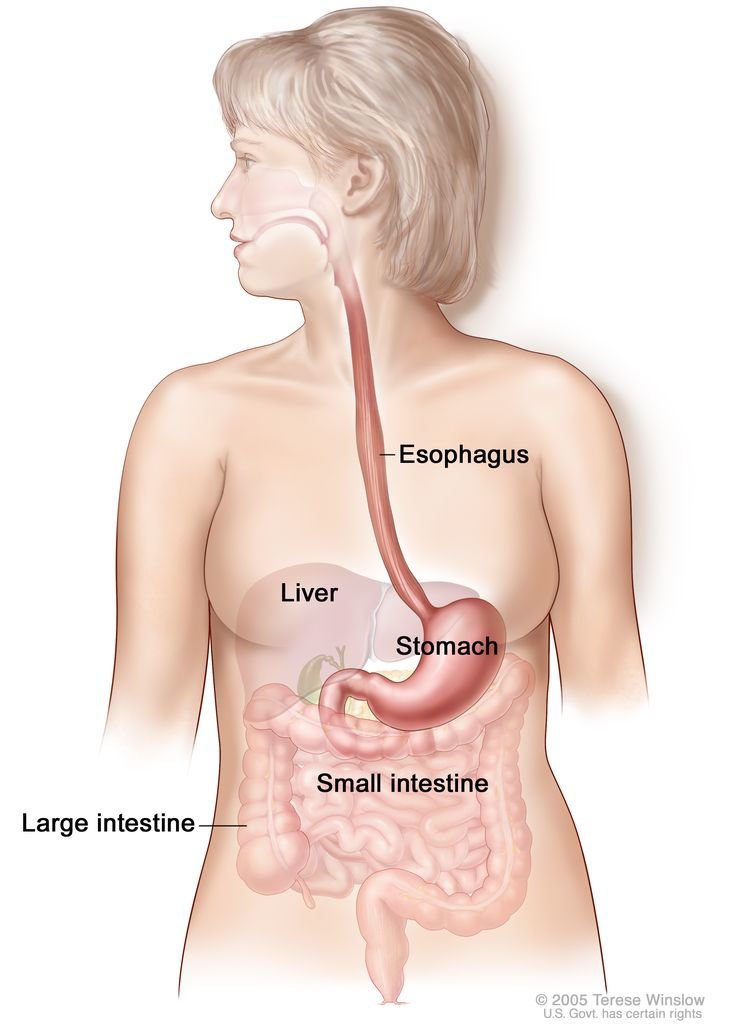When cancer is hard to swallow
Esophageal cancer is often unrepresented in the media, public discourse and general community discussions, leading to a lack of awareness of the existence, extent, causes and repercussions of this devastating diagnosis. Esophageal cancer is a disease that occurs when malignant (cancer) cells form in the tissue of the esophagus.
Esophageal cancer occurs in the esophagus, the long, hollow tube like organ that runs from the throat to the stomach. The esophagus moves food from the back of the throat to the stomach to be digested. Esophageal cancer usually begins in the cells that line the inside of the esophagus, and may occur anywhere along that tract. These mutations/changes make cells grow and divide out of control. These abnormal cells then form a tumor in the esophagus that may show growth, and invade nearby structures, potentially spreading to other parts of the body. This is the sixth most common cancer death, worldwide, with rates varying in different geographic locations.
Chronic irritation of the esophagus, including with risk factors such as smoking, heavy alcohol use, chronic acid reflux, an individual’s nutritional habits can increase the risk of esophageal cancer. Obesity and the disorder Barrett esophagus also is a risk factor for this disease. More men than women, statistically, will get esophageal cancer. Those diagnosed with Barrett’s esophagus (a precancerous condition caused by chronic acid reflux) should watch for other signs and symptoms and consult their physician for further screen options and to discuss the pros and cons of this screening.
Symptoms of this disease include difficulty swallowing (dysphagia), unintended weight loss, chest pain or pressure, indigestion, or worsening heart burn, chest pressure, coughing, or hoarseness without other known cause. Unfortunately esophageal cancer typically causes no signs or symptoms.
There are different classified types of cells involved in this type cancer. The type of resulting esophageal cancer will determine the treatment options used for treatment. Adenocarcinoma begins in the cells of mucus-secreting glands of the esophagus, occurring most often in the lower portion of the esophagus. Adenocarcinoma is the most common form of esophageal cancer in the United States, and affects primarily white males. Squamous cell carcinoma is made up of flat, thin cells that line the surface of the esophagus. This type of cancer occurs most often in the upper and middle portions of the esophagus. This is the most prevalent type of esophageal cancer worldwide. The other rare types of this cancer include small cell carcinoma, sarcoma, lymphoma, melanoma, and choriocarcinoma.
The complications that may be found with esophageal cancer, in the advancing stages, are obstruction of the esophagus, with the mutated cells making it difficult for food and liquid to pass through the esophagus. Increasing and difficult to manage pain. Bleeding in the esophagus, which is usually gradual during severe stages, though may present suddenly.
Preventing this type of cancer, or reducing the risk would include smoking cessation; consuming alcohol in moderation, if at all; eating more fruits and vegetables, especially a variety of colorful choices to be added to your diet; and maintaining a healthy weight.
Betty Cohn is a retired registered nurse with 35 years of experience in the medical field in a variety of roles. She will write a semi-monthly column about medical-related topics and welcomes questions and suggestions at bospangle@yahoo.com.
Comments






